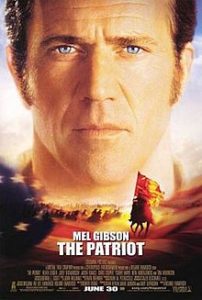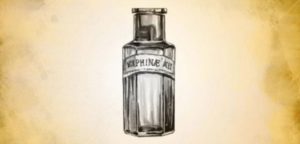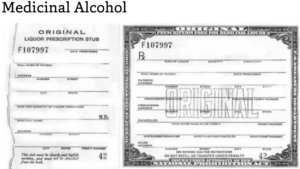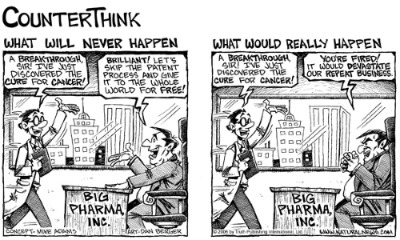The History of “Big Pharma”
How did Pharmaceuticals become a Billion Dollar Industry?
And our Pharmacy the third leading cause of death?? JAMA (1)
This is Big Pharma’s Story.
Since 5000 BC, Opium was a known painkiller in the East. There were no pharmacies back then, but the roots of the pharmacy is the history of Opium.
The Poppy seeds were cut open and a milky fluid collected and dried. A small amount was eaten for pain relief as well as during traditional ceremonies in honor of Mother Earth.
To the ancients, it felt like a connection to God. Peaceful.
When Jesus was born, “wise men” preferred Frankincense to Opium for relieving pain. Myrrh was the best antibiotic of the day.
Consider in your heart as you read; is our culture following “wise men“? Or are we following “White men willing to do anything for profit?“
Ancient wisdom taught that Opium was for emergencies or spiritual ceremonies. Frankincense was the best pain medicine for regular use. Some people indulged in ritual more than others, because it felt so good. However, it wasn’t considered a problem for 4500 years.
It’s main use was in Medicine. Paracelsus, a Swiss physician born in 1493, made a pain medicine of dried opium, citrus juice and pure gold.
In the 1500’s, Columbus returned to England with the Native American tradition of smoking tobacco leaves.
This eventually led to smoking opium, which Ancient Wisdom said was a bad idea!
In the 1600’s as trade expands, the white man invents recreational use. Ships chartered to Queen Elizabeth go with the intent to purchase the finest Indian Opium to transport back to England. 1680: English apothecary, Thomas Sydenham, introduces “Sydenham’s Laudanum,” a compound of opium, sherry wine and herbs. His pills, along with others of the time, become popular remedies for numerous ailments.
1700: The practice of smoking opium expands, leading to a massive addiction problem. When Science discovers how to pull things apart, they find that opium contains morphine, codeine, and heroin. They also find that burning Opium concentrates heroin, the most addictive part.
Ancient Wisdom and Chinese Rulers ban smoking Opium, and restrict its trade “for medicinal use only” in 1729.
In 1750, the British take control of two Opium growing districts in India. By 1767, export of Opium is greater than ever before. In 1793, British Rulers forbid Indian Poppy growers to sell to any other trading companies. This establishes a monopoly on Opium trade.
Meanwhile in the “New” America, British Control meets the wrath of hurting the innocent. In 1776 British Rule in America is defeated.
By 1799, addiction is so rampant in China that something must be done. Ancient Wisdom and Chinese Rulers issue a complete ban on Opium cultivation and trade.
As a result, the British import Opium to China illegally. This feeds China’s problems with addiction in the early 1800’s.
In 1839, the British attack China for more control of Opium. In 1852, Britain and France attack China again, beginning the era of “Forced Treaties.”
After the first Opium War, thousands of Chinese came to America to work. They found employment on railroads and in the California gold fields during the 1849 Gold Rush. They brought with them the habit of smoking opium.
Chinese immigrants soon established opium dens. These were places to buy, sell and smoke opium in so-called Chinatowns throughout the West. By the 1870s, opium smoking had become a popular habit for many Americans.. In 1875, San Francisco became the first city to pass legislation trying to limit opium use. The ordinance made it a misdemeanor to maintain or frequent an opium den.
In Germany, Morphine is chemically isolated from Opium in 1803. This achievement births our first Pharmacy.
The Merck family purchased a drugstore in 1668. They offered Opium, Mercury (for Syphilis), and a variety of folk medicine (herbal or plant medicine).
 In 1827, Merck releases it’s first Pharmaceutical, Morphine.
In 1827, Merck releases it’s first Pharmaceutical, Morphine.
In the “New” America in 1849, Pfizer Pharmaceuticals is replacing Native American healing traditions. This is just in time for the Civil War (1861-65). Pfizer’s medicines included Morphine, Mercury, and Artemesia. Artemesia was a folk medicine the Natives called Wormwood. This was because of it’s effectiveness in getting rid of intestinal worms. (2)
The Civil War made Pfizer a financial success, but left 400,000 soldiers addicted to morphine. (3)
In 1871, the New American House of Representatives ceased recognition of individual Native American tribes within the United States as independent nations. (4) . “Forced Treaties” suggest that White Men have the maturity level of toddlers. “It’s mine.“
After the war, Pfizer discovered a mass market product in citric acid, and further expanded their business on the sales of Pepsi and Coke.
By the second half of the nineteenth century, scientists had begun to look for a less addictive form of morphine. In 1874, an English chemist named Alder Wright first refined heroin from a morphine base (by burning it). The drug was intended to be a safer replacement for morphine.
In the 1890s, German pharmaceutical company Bayer marketed heroin as a morphine substitute and cough suppressant. Bayer Pharmaceuticals promoted heroin for use in children suffering from coughs and colds.
Without any scientific basis, doctors proposed, or maybe just hoped out loud, that it would cure Morphine addiction.
Unfortunately, as a result of these medical treatments, by the early 1900s, heroin addiction in the United States and western Europe had skyrocketed.
The Most Addictive Chemical on Earth.
The coca plant is one of the oldest cultivated plants in South America. Botanists think its cultivation originated in the Amazon Rainforest and spread to the Andes Mountains.
Because users felt an exhilarating sensation and an increase in energy, the indigenous people of South America have chewed the coca leaf for centuries. Coca leaf was also included in Inca cultural and religious ceremonies.
German chemist Albert Nieman isolated cocaine from coca leaves in 1860. He noticed that the powdery white substance made his tongue feel numb.
More than two decades later, Austrian ophthalmologist Carl Koller experimented with cocaine as a surgical anesthetic because cataract surgery was typically performed without anesthesia at the time.
Ether and chloroform couldn’t be used because they made patients vomit—an obvious problem when performing delicate eye surgery. As a result, most cataract patients endured excruciating pain.
After soaking the eye in a cocaine solution, Koller found that patients no longer flinched when the scalpel touched their eye.
By 1880 several pharmacies have the concentrated version of the Coca leaf, Cocaine. (5)
In the “New” America, Pfizer sold the drug in various forms, including cigarettes and powder. They even sold a cocaine mixture that could be injected directly into the user’s veins with the included needle. The company promised that its cocaine products would “supply the place of food, make the coward brave, the silent eloquent and … render the sufferer insensitive to pain.” (6)
American pharmacist John Stith Pemberton founded Coca-Cola in 1886.
In 1900, caffeine replaced “coke” in coca-cola.
Meanwhile, some slave owners gave Pfizers cocaine to slaves in order to get more work out of them.
America was the land of the addicts. Morphine, Heroin, and Cocaine. Concentrated “active ingredients of harmless plants, when used according to Ancient Wisdom.
White Man made them into Drugs.
White man gave Cocaine to slaves. When black men attacked a white woman, and police reported that black men high on Cocaine “wouldn’t stop when we shot them,” the fear of not being able to control them led White Men to ban drugs.
The Harrison Narcotics Act of 1914 was one of the country’s first forays into national drug legislation.
The first was taxation on alcohol sales. Taxes on alcohol brought the US Government 200 Million dollars per year in revenue in the early 1900s. This left them hungry for MORE. In 1913, our Government of Wealthy White Men passed the 16th Amendment, a tax on every person’s wages and earnings.
By 1920, the US Government noticed some rebellion, and passed the 18th Amendment to the Constitution, Prohibition. This lasted until 1933 when the 21st Amendment repealed it. In my opinion, they should call it, “Wealthy White Men are more secure if Americans can’t see straight.”
White men have been the most “hard” on Caretakers.
Wealthy White Men abolished “owning other humans” in 1865 with the 13th Amendment. Four years later, all men could vote, even if you were a slave in a past life, with the 15th Amendment.
It took another 5o years to elevate the status of women to greater than “Slave,” with the 19th Amendment to the Constitution (1919).
Back at the Pharmacy…
During Prohibition, bootleggers and the mafia brought alcohol to the poor and middle class. Meanwhile, doctors provided it to the wealthy. By 1928, Medicine was earning 40 Million per year for the  prescription of alcohol. (7).
prescription of alcohol. (7).
That was the same year of the discovery of Penicillin . That earned Pfizer Pharmaceuticals a new level of profit.
In 1950, Pfizer released a more powerful antibiotic, Teramycin, which earned millions on top of millions.
The first antibiotic resistant bacteria was identified in 1959. (8) .
In 1980, Pfizer released Feldane, brand name Mobic, a non-steroidal anti-inflammatory (NSAID). Mobic became the first Billion Dollar per year drug.
1990 brought the next generation of antibiotics, with Pfizer’s Zithromax. By 2014, Medscape reported that, “Inappropriate use of Zithromax has led to widespread antibiotic resistance and is contributing to the emergence of super bugs.” (9)
In 1990, Pfizer released Lipitor, the drug that reached 100 Billion per year. It doesn’t even relieve a pain, just the fear of a pain.
It appears that these Business Men have us just where they want. Ready to swallow anything.

These men are the third leading cause of death.
I searched high and low and couldn’t find a single documented death from the use of Mother Nature’s Medicine.
Pfizer is the “New” America’s oldest pharmaceutical company, offering Advil, Viagra, Xanax, Zoloft, Celebrex, Lyrica, and Premarin for Estrogen replacement. Check for yourself the number of deaths at the hands of Advil, Celebrex, and Estrogen replacement. I bet the rest aren’t much better.





Leave a Reply
Want to join the discussion?Feel free to contribute!